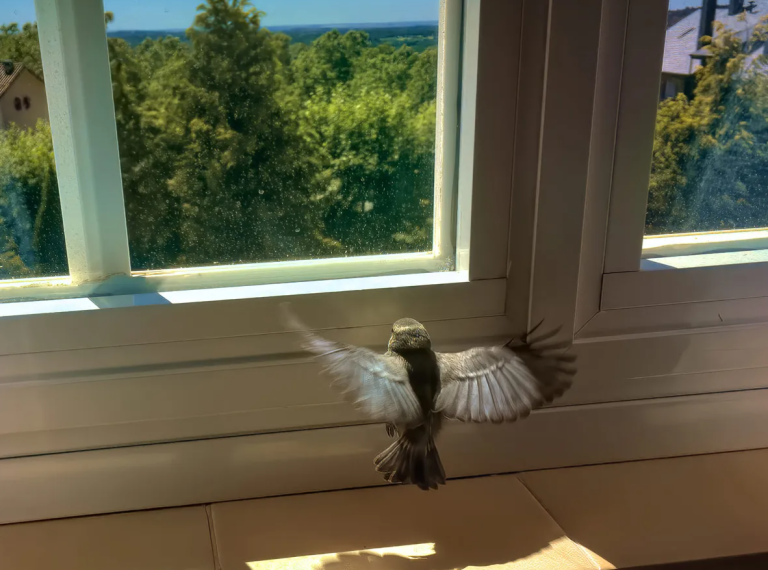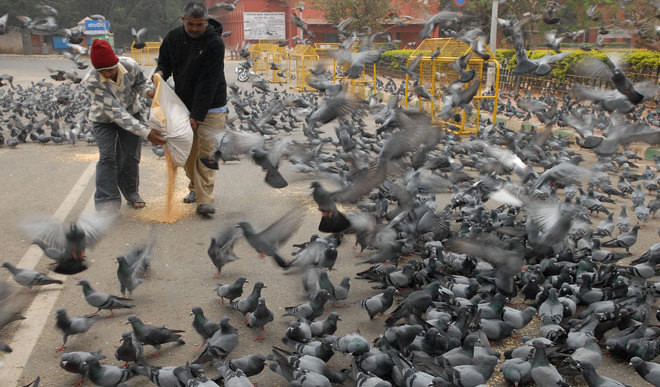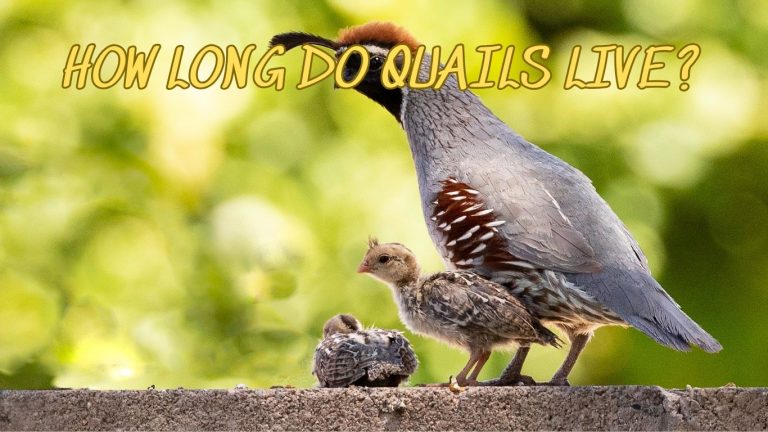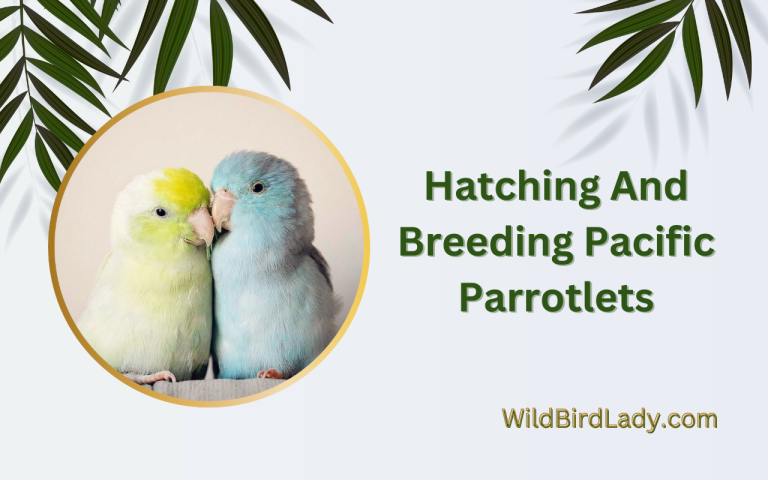Step By Step How To Copy Train A Parrotlet To Talk
To copy train a parrotlet to talk, start by teaching it basic words and phrases, and then gradually increasing its vocabulary. Parrotlets are small, intelligent birds that make excellent pets.
They are known for their ability to mimic human speech, making them particularly fun to train. Copy training a parrotlet to talk takes patience, consistency, and plenty of positive reinforcement. The key to success is to break the training process down into manageable steps, teaching your bird basic words and phrases, and gradually building on its vocabulary.
In this article, we’ll take you step by step through the process of training your parrotlet to talk, from choosing your first words to practicing with your bird every day. So if you’re ready to teach your feathered friend how to speak like a human, let’s get started!
Credit: www.wikihow.pet
Understanding The Basics Of Parrotlet Training
Parrotlets are intelligent birds that can be trained to do a lot of things, including talking. When it comes to training your parrotlet to talk, there are several essential basics that you need to understand. In this section, we will explore some of these basics.
Choosing The Right Parrotlet
Before you can begin training your parrotlet, it is essential to choose the right one. Here are some tips to help you make the right choice:
- Make sure that the parrotlet is at least six months old. Parrotlets younger than six months are not yet mature enough to learn to talk.
- Choose a parrotlet that has a good temperament. A parrotlet that is calm and comfortable in its surroundings is more likely to learn to talk.
- Make sure that the parrotlet is healthy. A sick or malnourished parrotlet will not have the energy to learn new things.
Deciding On The Training Goals
Before you start training your parrotlet to talk, you need to decide what your goals are. Do you want your parrotlet to learn a few simple words and phrases, or do you want it to have an extensive vocabulary? Here are some tips to help you set your training goals:
- Start by teaching your parrotlet a few simple words and phrases. Once your parrotlet has mastered these, you can move on to more complex phrases.
- Be patient. Training your parrotlet to talk takes time and effort, so don’t expect results overnight.
- Celebrate your parrotlet’s successes. When your parrotlet learns a new word or phrase, be sure to reward it with treats and praise.
Understanding Parrotlet Behavior
Understanding your parrotlet’s behavior is key to training it to talk. Here are some things to keep in mind:
- Parrotlets are social birds and need a lot of attention. Make sure that you spend plenty of time with your parrotlet every day.
- Parrotlets respond well to positive reinforcement, so be sure to reward good behavior with treats and praise.
- Parrotlets can get bored easily, so try to keep training sessions short and engaging.
Understanding the basics of parrotlet training is crucial to training your parrotlet to talk successfully. By choosing the right parrotlet, setting achievable training goals, and understanding your parrotlet’s behavior, you can train your parrotlet to talk like a pro in no time!
Pre-Training Prep For Your Parrotlet
Getting ready to train your parrotlet to talk is crucial to the success of the endeavor. Before diving into training, it’s essential to follow a few preparation steps that’ll help create a positive environment that nurtures trust, focus, and motivation.
Here are some of the critical things to prepare:
Setting Up The Training Space
Designing an environment tailored to training is the first step toward creating a positive learning experience. Consider following these steps when setting up your parrotlet’s training space:
- Choose a quiet place: Pick a quiet spot where you can concentrate without interruption.
- Free from distractions: Make sure to remove any objects that may lead to distraction, such as tvs or loud music.
- Maintain a comfortable temperature: Keeping the training area at a comfortable temperature ensures the bird’s comfort and focus during sessions.
- Adequate lighting: Proper lighting is crucial, so the parrotlet can see what’s happening around it.
Establishing Trust With Your Parrotlet
Before training can commence, building a relationship based on trust is paramount, and it starts by doing the following:
- Spend time with your parrotlet: Spend time with your bird so that they become comfortable with your presence.
- Approach gently: Approach slowly, with caution, talking to your bird in soothing tones before making physical contact. Parrotlets are generally skittish due to their small size, so avoid scaring them.
- Offer treats: Offer treats frequently so that your bird associates good things with your presence.
- Let your parrotlet take control: Give your bird plenty of space and let them guide interactions until they become comfortable stepping up onto your hand.
Preparing Appropriate Treats
Using positive reinforcement techniques is critical to successful training. By ensuring that your bird has access to preferred treats, it’ll respond positively during training exercises. Follow these guidelines:
- Choose healthy treats: Choose healthy and appropriate treats that your bird enjoys, such as fruit or nuts. Avoid processed human food that may contain additives that are not good for your parrotlet.
- Use small pieces: Use small cut-up pieces of the treats to avoid overfeeding your bird.
- Rotate treats: Rotate the treats and provide a variety of options to ensure that your parrotlet does not get bored.
By following these steps, you’ll be well on your way to creating an environment that nurtures trust, motivation, and focus, ensuring a successful training experience.
Step-By-Step Training Techniques
Parrotlets are intelligent, social, and highly interactive birds that make wonderful, talkative companions. With proper care, attention, and patience, anyone can teach their feathered friend a few words. It will take some time to teach your parrotlet to say words and phrases, and the process requires repetition, consistency, and positive reinforcement.
Here is a step-by-step guide on how to copy train a parrotlet to talk using effective techniques.
Starting With Simple Words
One of the first steps in getting your parrotlet to talk is to start with simple words. Choose words that your parrotlet uses often, such as their name, favorite food, or toys. Here are a few tips on teaching your parrotlet simple words:
- Repetition: Repeat the word or phrase several times every day in a calm and clear tone.
- Short sentences: Use short, one to two-word sentences.
- Positive reinforcement: Give your parrotlet a treat or praise when he repeats the word correctly.
Teaching Your Parrotlet To Associate Words With Actions
The next step is to teach your parrotlet to associate words with actions. For example, when you say ‘good morning,’ you can wave your hand, and when you say ‘come here,’ you can point to yourself or the designated spot.
Here are a few tips to teach your parrotlet to associate words with actions:
- Consistency: Use the same words and actions each time.
- Practice: Repeat the words and actions each day to reinforce the association.
- Positive reinforcement: Use treats and praise to reward your parrotlet for responding correctly.
Progressing To Cues And Phrases
Once your parrotlet becomes familiar with basic words and actions, you can progress to cues and phrases. Here are a few tips to teach your parrotlet to learn cues and phrases:
- Expand vocabulary: Introduce new words slowly, and reinforce them during playtime or when giving treats.
- Contextual words: Use words that are beneficial to your parrotlet’s environment, such as ‘come here’ when it’s mealtime or time for play.
- Reinforcement: Reward your parrotlet each time he responds to a new cue or phrase.
Working On Pronunciation
As your parrotlet becomes more vocal, you can work on pronunciation. Like all languages, proper pronunciation is important for communication. Here are a few tips to help your parrotlet work on pronunciation:
- Correct your parrotlet: When your parrotlet mispronounces a word, gently correct them by repeating the word correctly and rewarding them for their efforts.
- Praise: Praise your parrotlet when they correctly pronounce words.
With patience, positive reinforcement, and consistent practice, anyone can teach their parrotlet to talk. Start with simple words and actions, progress to cues and phrases, and work on pronunciation. Remember, the key to success is to keep the training fun, interactive, and rewarding for your feathered friend.
By following these techniques, soon you will be able to copy train a parrotlet to talk.
Ongoing Training And Reinforcement
Parrotlets are intelligent birds that can learn to talk when trained properly. One of the key factors in training your parrotlet to talk is consistency, using rewards, and making training fun to avoid stress. You need to create a conducive and friendly environment for your parrotlet to make the learning process smooth and easy.
Consistency in training and rewards will encourage desirable behavior, while avoiding overtraining and stress will ensure your parrotlet doesn’t become overwhelmed. Below are some key points to ensure your parrotlet is encouraged to learn how to talk.
Consistency In Training And Rewards
Consistency is key when teaching your parrotlet to talk. Praise and give treats when your parrotlet repeats words correctly, and keep practicing until they become comfortable with the words. It’s important to maintain the same routine and the same word to emphasize the desired behavior.
This reinforcement will help your parrotlet retain the words and remember the training.
Building On The Words/Phrases Taught
Once your parrotlet has learned a few words, introduce new ones. Build words off those they have already mastered to keep their interest alive. Rehearse the previous words with the new ones in a manner that’s enjoyable to your parrotlet.
Blow bubbles or use a toy to make the training session more fun. It’s important not to rush the process, as parrotlets can become overstimulated when learning new words.
Making Training A Fun Activity For Your Parrotlet
Parrotlets are social animals and enjoy physical attention. Play games with them while training, such as “peek-a-boo” or “fetch the ball”. You can also use different colors and shapes to make the learning process more engaging. If you notice your parrotlet is losing interest or becoming irritable, end the session and continue later.
A five or ten-minute session daily is more effective than a one-hour session once a week.
Avoiding Overtraining And Stress
Training your parrotlet to talk should be an enjoyable experience for you and your pet. Ensure you’re not overwhelming your parrotlet with too much word training, and be concise with the words you teach them. Overstimulation and stress can lead to aggression, biting, or destructive behavior.
When your parrotlet shows signs of stress, such as vocalizing excessively or hyperventilating, pause the training process.
Consistency in training and rewards, building on previous words, making training a fun activity, and avoiding overtraining and stress are crucial components when teaching your parrotlet to talk. With time, patience, and dedication, your parrotlet will learn to speak and communicate with you effectively.
Common Problems And Solutions
Parrotlets are intelligent and playful birds that can be excellent pets. One fascinating thing about them is their ability to mimic human words. Many bird owners enjoy the challenge of training their parrotlets to talk, but it’s not always an easy task.
In this section, we will discuss common problems and solutions that you might encounter when attempting to copy train a parrotlet to talk.
Lack Of Progress In Training
It’s not uncommon for some parrotlets to take longer than others to start talking. Here are a few possible reasons why your feathered friend may not be making progress, along with some solutions:
- Lack of motivation: Parrotlets, like any other bird, require motivation to learn tricks and words. Observe your bird and try to figure out what it likes. Use its favorite toys or treats as rewards to motivate it during training sessions.
- Limited vocabulary: If your parrotlet has learned only a few simple words, it may be because you aren’t exposing it to enough new words. Speak to it constantly and try to teach it new words or phrases frequently. Also, make sure to use the same words or phrases consistently to prevent confusion.
- Noisy environment: Parrotlets need a quiet environment to focus on learning. If you train your bird in a noisy room, it could be hindering its learning progress.
Aggressive Behavior
Parrotlets can become territorial and aggressive when they feel threatened. Here are some reasons why your bird might be aggressive, along with some solutions:
- Lack of socialization: If your parrotlet hasn’t been socialized enough, it may be afraid of people and exhibit aggressive behavior. Try to spend more time with your bird and handle it daily to build trust.
- Protective behavior: Parrotlets are naturally protective of their territory. If your bird exhibits aggressive behavior when you approach its cage, try to be more sensitive to its body language, and speak softly to it. Gradually introduce your hand into its environment.
- Hormonal changes: During breeding, parrotlets tend to become more aggressive. In this case, avoid any physical contact and give your bird enough space.
Biting And Screaming
Many parrotlets tend to bite, which can be quite painful. It’s important to understand why your bird is biting and screaming and how to prevent it. Here are some possible explanations along with some solutions:
- Fear or discomfort: If your bird is biting, it may be out of fear, discomfort, or pain. Observe your bird closely and check for any signs of illness or injury. If it’s behaving oddly or fluffing up, it may indicate illness.
- Demanding attention: If your parrotlet is screaming, it could be demanding your attention. In this instance, try to interact with it more regularly by speaking to it or gently petting it. Offer it new toys and games to keep them engaged.
- Teething: If your parrotlet is biting during its teething phase, it’s nothing out of the ordinary. Give it safe chewing materials, such as baby toys or wooden blocks, to keep its beak busy.
Solutions And Remedies
In this section, we will provide some additional solutions and remedies that can help you overcome some of the common problems encountered in parrotlet training.
- Routine and consistency: Parrotlets do well with routine and consistency. Schedule your training sessions at the same time each day to help your bird develop good habits.
- Positive reinforcement: Use positive reinforcement strategies such as rewarding your bird with treats during training sessions. Praise and repeat correct words or sounds.
- Patience: Parrotlets don’t learn overnight. Be patient, and don’t give up on your bird.
- Professional help: Consider the help of professional trainers who have experience with bird training.
By adhering to these methods and addressing these issues, you can overcome some of the common problems in parrotlet training and help your bird develop a vocabulary of interesting words for you to enjoy.
Frequently Asked Questions For Step By Step How To Copy Train A Parrotlet To Talk
Can All Parrotlets Learn To Talk?
Yes, all parrotlets have the ability to learn to talk. However, some birds are better talkers than others and it may take longer for some birds to pick up speech than others.
At What Age Should I Begin Training My Parrotlet To Talk?
You can begin teaching your parrotlet to talk at any age. However, younger birds tend to learn quicker. The ideal age to begin training your parrotlet is between 6 months and 1 year.
How Long Should I Train My Parrotlet Everyday?
Training sessions should be short and frequent. 10-15 minutes per session, at least 2-3 times a day, is ideal. Keep in mind that parrots have short attention spans.
What Should I Use To Teach My Parrotlet To Talk?
It’s best to start with simple words or phrases, and use a high-pitched, enthusiastic tone. You can also use toys, treats, or praise as positive reinforcement during the training process.
How Long Will It Take For My Parrotlet To Start Talking?
The time it takes for a parrotlet to start talking varies. Some birds may start within a few days, while others may take several weeks or even months. It’s important to be patient and consistent with the training process.
Conclusion
Training your parrotlet to talk is a rewarding process that requires patience, consistency, and a whole lot of love. Remember that you’re building a bond with your feathered friend that will last a lifetime. As you follow these steps and watch your parrotlet learn to mimic your words and phrases, you’ll find yourself filled with pride and joy.
Always keep in mind that each bird learns differently and at its own pace, so don’t lose heart if your parrotlet takes longer to learn than others. Stick with it, and you’ll soon have a chatterbox of a bird on your hands.
With a little bit of effort and a whole lot of love, you can teach your parrotlet to talk and create a unique bond that you’ll both cherish for years to come.








